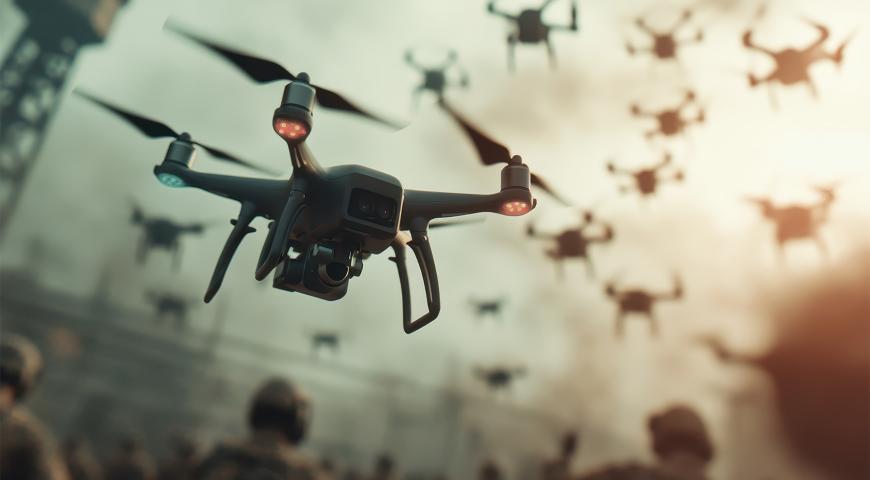If I was to suggest to a room of military professionals that we needed to teach our workforce how to think (and how not to), I expect the proposal would elicit a negative, and likely animated, reaction.
Some would accuse me of obnoxious presumption. Others would reproach me for that most maligned of leadership styles, micromanagement. Still others would censure me for threatening the central, and most precious, pillar of Army’s warfighting philosophy, mission command.
Such criticism would be earnestly, and perhaps vehemently, offered.
Notwithstanding this likely, fervent response to the above hypothetical, there is a pressing need to educate Army’s workforce on how to think (and how not to). Indeed, teaching our subordinates, peers and superiors how to think (and how not to) is fundamental to Army maintaining a competitive edge over increasingly capable, winner-takes-all, competitors in a dynamic environment ‘characterised by high levels of uncertainty, ambiguity and change.’[i]
Accordingly, this blog will describe how Army can teach its workforce how to think (and how not to). Unpacking this proposition compels a review of how humans think, followed by how our Army can teach us how to think (and how not to). The good news is that our organisation already possesses the vital attributes to achieve this outcome.
How Humans Think
Cognitive psychologists inform us that human beings employ two types of thinking. They also contend there are a number of inhibitors to how we think.[ii]
‘Systems 1’ is the first type of thinking. It is rapid, instinctive, intuitive, implicit, emotional and reflexive. Relating this type of thinking to military colloquialisms, it is the equivalent of shooting from the hip, firing and forgetting or thinking on autopilot. ‘Systems 1’ thinking is most appropriate when applied to repetitive tasks, crises and static situations.
Acclaimed psychologists and behavioural economists claim humans have a proclivity for ‘Systems 1’ thinking.[iii] While some attribute this predilection to our innate laziness, others argue its disproportionate use reflects the body’s desire for efficient energy consumption: while the brain only accounts for ~ 2.5% of our body weight, it consumes ~ 20% of its energy needs.[iv]
Experts classify the second type of thinking as ‘Systems 2.’ It is variously described as deliberate, intentional, logical, critical or reflective. It is what our teacher’s referred to when they exhorted us to put our thinking caps on. For military readers, I suppose it is colloquially equivalent to command/wire guided thinking. ‘Systems 2’ thinking is most appropriate when challenged by confusing, complex, competitive, consequential and evolving scenarios.
‘Systems 2’ thinking is notoriously difficult. Moreover, it is often confronting. When applied correctly, even if astutely, it consumes disproportionate energy. It’s exhausting.
There are numerous inhibitors to our thinking – particularly, but not exclusively, for situations meriting a ‘Systems 2’ approach.
Individual ego is key amongst these inhibitors. ‘Of all the causes which conspire to blind man’s erring judgment, and misguide the mind…is pride, the never-failing vice of fools’ counsels poet Alexander Pope. We have all heard others, and perhaps ourselves, exclaim, I know boats! – or words to that effect.
Another is fear: fear of failure, embarrassment, loss of popularity, reputation...Distinguished psychologist Abraham Maslow contends an individual only engages in thinking ‘to the extent that he is not crippled by fear and to the extent that he feels safe enough to dare.’[v]
Then there is the frequent, yet mistaken, prioritisation of bureaucratic process over outcome (unsurprisingly, a common malady affecting bureaucracies), the elevation of measures of performance over effectiveness and the erroneous focus on ways and means over ends.
Finally, our thinking is prejudiced by our biases.
Chief amongst these is confirmation bias. You may have heard this bias expressed in the forms of: I don’t agree because it is, or at least seems, different to how I did it; or this doesn’t look like my experience, so it must be wrong; or we do it this way because it’s the way we’ve always done it around here.
Confirmation bias is especially malevolent. Some refer to it as our most treasured enemy. An equally incisive definition states ‘our opinions, our acumen – all of it, are the result of years of selectively choosing to pay attention to that information only which confirms what our limited minds already accept as truth.’[vi] Confirmation bias is the enemy of innovation and initiative. It imprisons us via our experiences. It takes umbrage to divergent views and approaches. It promotes lazy ‘Systems 1’ responses to situations befitting a ‘Systems 2’ approach. Unfortunately, confirmation bias is all too prevalent in human-based organisations such as Army.
Amongst a legion of other biases, there is ‘anchoring bias,’ which sees the thinker fixated on a singular perspective or evidence set – and is, consequently, close-minded to divergent views. Poor decisions resulting from this bias invariably invite the criticisms they could not see wood for the trees, the Biblical the eyes only see what the mind is prepared to comprehend and the particularly judgemental they should have seen it coming.
Next is ‘self-interest bias,’ which should be self-explanatory - even to the self-obsessed. Finally, there is the all-too-human, and particularly pernicious ‘superiority illusion bias.’ Because many of us are humble, at least outwardly, this bias often manifests during Hamletesque soliloquy or internal monologue as of course, my decision and experience is more relevant/valid/truthful than yours. Therefore, I am right – and you, you are wrong!
There are other biases to our thinking (hindsight, availability, cultural, framing, bandwagon etc). Indeed, the list is quite extensive, if not daunting. The common fruit of all inhibitors is toxic to how Army’s workforce thinks, and, in turn, to the competitive edge it seeks over any adversary.
How our Army can teach us how to think (and how not to)
Award winning author Ed Hess asserts there are three vital attributes required for Army to teach us how to think (and how not to). He offers the formula: the right people + the right processes + the right culture.[vii] Encouragingly, our organisation already possesses each of these critical characteristics.
Let’s accept the premise that the Army attracts the right people. Given the author’s occupation, some may impute this assertion as an example of his own confirmation bias (or, perhaps superiority-illusion bias!). However, it would be fair to say the Australian Army attracts people of sound intellect, even if no more or less than any other organisation competing for our nation’s human capital.
Believe it or not, Army has some excellent processes for teaching us how to think (and how not to). Reread our warfighting philosophy. It is founded on ‘Systems 2’ thinking – namely manoeuvre theory and mission command. Our Military Appreciation Process perpetually exhorts us to park our biases and iteratively perceive task, terrain, threat and opportunity through the eyes of others – specifically adversaries, belligerents and neutrals. Our tactical doctrine is principle/consideration based, encouraging us to think reflectively. Our resource-smart Tactical Exercises Without Troops (TEWTs) encourage us to pursue tactical ends by employing the right ways (doctrinal principles and considerations) and means (groupings of combined-arms/joint teams).
After Action Reviews (AAR) promote ‘Systems 2’ thinking. When conducted well, they stymie the insidious influences of ego, fear and biases. Army’s force generation cycle is a marvel for teaching us to think deliberately, intentionally, logically, critically and reflectively about confusing, competitive and rapidly evolving scenarios of the utmost consequence. Let’s not forget the extraordinary Defence Science and Technology Group, who, for decades, has encouraged our workforce to explore, understand and leverage the science of our profession – if only we would listen to it. Another leading organisation for promoting introspective thinking is Army’s Combat Training Centre, whose shrewd slogan prompts us to ‘know yourself.’
Likewise, our Army’s culture promotes the right kind of thinking. Its long-standing commitment to Professional Military Education at all levels is but one example. Another is its unmatched financial support to all ranks pursuing tertiary studies. Further evidence of Army’s learning culture is its recent pivot towards innovation, the rise and rise of mechanisms, such as The Cove, Grounded Curiosity, Logistics in War and DEFAUS and its enduring publication of leading, peer-reviewed journals and like publications.
There is ample evidence our Army possesses Hess’s attributes, and in good measure. However, there is equal evidence of endemic corruption of these attributes. Indeed, ego, fear, bias, prioritisation of process over purpose, elevation of measures of performance over effectiveness and the erroneous focus on ways and means over ends pervasively pervert the righteous thinking promoted by Army’s people, processes and culture.
The consequences are ruinous for an organisation obligated to maintain overmatch over increasingly competitive and capable adversaries. The corruption in Army’s thinking, from how to to how not to, manifests in poor decisions, missed opportunities, unnecessary exposure to real risk, exaggeration of perceived/imaginary risk, stunted innovation, frustration, disenfranchisement, friction and uncertainty. It renders the slogan outthink, outperform, outlast the enemy vacuous. We have all seen it. Frankly, being human, we have all contributed to it.
Chronicling exhaustive examples of each inhibitor is beyond this blog’s remit. Notwithstanding, for erudition’s sake, it is worth identifying some of the most virulent examples.
Particularly in recent years, Army has trended towards a particular, confirmation biased, and perhaps superiority illusion tainted view, of what combined-arms must look like. If your solution to a tactical or training scenario does not conform with someone else’s norm, you must be tactically inept.
Then there is the incessant urge to control, orchestrate, synchronise and prescribe tactics to the nth degree. While dichotomous to the enduring friction, uncertainty and chaos of war, this predilection is a symptom of our ego, fear and bias.
The unfettered creation of additional process, or rules, to obviate the need for ‘Systems 2’ thinking is another detrimental development. Everything can be reduced to a battle drill, to a template, to a binary policy response! There is no need to think at all! Such an approach only promotes unsuitable ‘Systems 1’ thinking to situations compelling ‘Systems 2’ responses. Moreover, and perhaps worse, it asphyxiates the right people, right processes and right thinking culture in Army. If only we realised it was our own hands throttling our own throats…
Another ‘ole chestnut is the oft-encountered, entrenched resistance to changing the way we train and fight upon the introduction of new equipment. We don’t need none of those new-age techniques. We’ll just continue to do things the way we always have, old school – just slightly better. Optimising capability enhancement from force modernisation is impossible in any organisation where this bias prevails.
Then we have the abject ignorance, or fanatical repudiation, of the readily available science underpinning our profession. Vital subject areas include, but are hardly limited to: physiology, psychology, how we learn, load carriage, ballistics, battlefield shooting techniques etc). I know boats – right?
A final example, but by no means the final example, is the overemphasis on assessment, vice learning, in our schoolhouses - and during some of our largest field exercises. All too often, our inhibitors render effective mechanisms to promote ‘Systems 2’ thinking during planning, TEWTs and AARs ineffective. All too frequently, our training illuminates the worst in everyone’s ego, fears and biases.
In the end, inappropriate, unfulfilling ‘Systems 1’ thinking routinely prevails, clouded by inhibitors, reducing effective processes to box-ticking rituals, prioritising means and ways over ambiguous ends. Whatever happened to learning by doing; or your best teacher is your last mistake; or there is no failure, only feedback; or being sufficiently humble to simply admit I just don’t know?
Open mindedness.[viii] This is the answer to teaching Army’s workforce, our subordinates, our peers, and our superiors, how to think – and how not to. It is the key for unlocking Army’s enduring competitive edge over increasingly capable, winner-takes-all, competitors in a dynamic environment ‘characterised by high levels of uncertainty, ambiguity and change.’ Open mindedness is the antidote to the invasive, noxious symptoms of our all-too-human cognitive dissonance. Open mindedness will ensure Army realises the potential offered by our people, our processes and our culture.
So how do we achieve open-mindedness? How do we overcome our preference for ‘Systems 1’ thinking and the inhibitors, which so loyally defend, protect, or at least rationalise our existing views.[ix]
First, we need to truly, and honestly, understand, and perhaps reconcile with, how we think. As the Combat Training Centre extols, you need to ‘know yourself.’ As poet, playwright and social critic TS Elliot urges ‘we can at least try to understand our own motives, passions, and prejudices, so as to be conscious of what we are doing...This is very difficult, because our own prejudice and emotional bias always seems to us so rational.’ We need to deliberately think about how we think.
Secondly, we need strong leadership to encourage the ‘Systems 2’ approach when it is most needed and to overcome the ego, fear and biases which so readily unhinge its application. This leadership must manifest in the Regimental environment, the schoolhouse, in our headquarters, on operations – everywhere. If it does, it will stem the loss of competitive advantage caused by self-inflicted inhibitors, which wound our organisation’s potential, our edge, our ability to outthink, outperform, outlast the enemy, so deeply. It will unlock the cognitive cell block, which so often imprisons our own intellect.
Finally, we need diverse teams to transform how we think in Army. Overcoming our proclivity for lazy ‘Systems 1’ thinking, as well as our thinking inhibitors, is extraordinarily difficult. It can be too much for individuals to truly, and honestly, understand how they think, to recognise their cognitive blind spots – let alone rectify them. Because it is easier to recognise other people’s inhibitors than one’s own, an engaged, diverse team can scrutinise the veracity of judgments, conclusions and decisions much more effectively than when we are left to our own devices.
Remarkably simple, isn’t it? While easy to expound, in a human organisation such as Army, open mindedness is so difficult to achieve. And yet, we have the attributes to readily achieve it. We have the people, the processes and the culture already in place. Through open mindedness, strong leadership and diverse teams, we can transform our thinking, realise our true potential, our true competitive edge. After all, ‘there are no constraints on the human mind…no barriers to our progress, except those we ourselves erect.’[x]
[i] Hess, ED Learn or Die: Using Science to Build a Leading-Edge Learning Organization, 3.
[ii] Kahneman, Thinking, Fast and Slow, 20.
[iii] Op cit, Learn or Die: Using Science to Build a Leading-Edge Learning Organization, 11.
[iv] Hardiman, The Brain-Targeted Teaching Model for 21st-Century Schools, 17.
[v] Op cit, Learn or Die: Using Science to Build a Leading-Edge Learning Organization, 13.
[vi] Quote from speaker, author Ina Catrinescu.
[vii] Op cit, Learn or Die: Using Science to Build a Leading-Edge Learning Organization, 11.
[viii] Ibid, p 12.
[ix] Ibid, p 14.
[x] Quote from President Ronald Regan speech.
Please let us know if you have discovered an issue with the content on this page.
Comments
Start the conversation by sharing your thoughts! Please login to comment. If you don't yet have an account registration is quick and easy.




